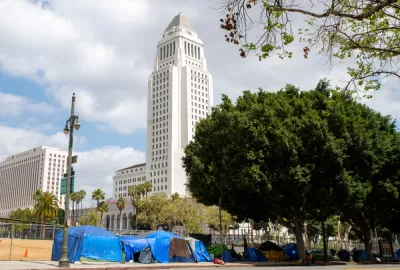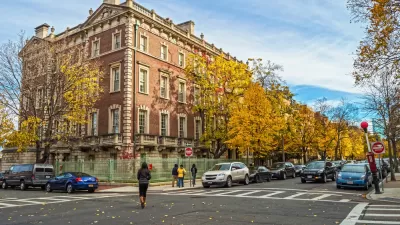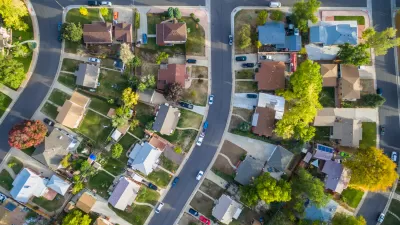California took the U.S. Department of Housing and Urban Development's Affirmatively Furthering Fair Housing (AFFH) rule and ran with it. Fully realizing the goals of the AFFH in California will require more work, according to a recent analysis.

Writing for the Policies for Action blog of the Robert Wod Johnson Foundation, Paavo Monkkonen, Michael Lens, and Moira O’Neill provide analysis of California’s implementation of the Affirmatively Furthering Fair Housing (AFFH) rule.
The AFFH is a provision of the Fair Housing Act adopted by the Obama administration, gutted by the Trump administration, and reinstated by the Biden administration. California codified the AFFH into state law in 2018, with, according to the authors, the potential to advance fair housing goals at the state level than the federal level.
“A state AFFH mandate may have more potential to 'replace segregated living patterns with truly integrated and balanced living patterns' than the federal rule because states have the unique authority to directly intervene in local planning and zoning, rather than just withholding funding,” according to the authors.
According to the analysis of the authors, California’s AFFH implementation has a long way to go, however: “Only a dozen of the nearly 200 jurisdictions in Southern California required to submit housing plans had submitted such plans by October 2021, and inadequate AFFH sections in these plans have been a major challenge.”
The "bumpy" implementation of the AFFH rule in California has become apparent in the most recent Regional Housing Needs Assessment process, mandated for local jurisdictions every eight years.
“We read the [California Department of Housing and Community Development (HCD] review letters and found that most jurisdictions’ housing elements either lacked an AFFH analysis section or lacked several required components specified in the April 2021 guidance. Most jurisdictions’ AFFH programs also did not contain sufficient detail. Notably, HCD recently rejected Los Angeles’ housing plan because its AFFH programs were insufficient (Planetizen coverage of the news), despite experts having praised the housing plan for going beyond state guidance to accurately project development potential and propose necessary rezoning.”
According to the conclusion of the authors, described in much more detail in the source article, linked below, the state’s AFFH implementation is insufficient to achieve its own stated goals.
FULL STORY: Affirmatively Furthering Fair Housing in California: A Bumpy Rollout or a Flawed Approach?

Planetizen Federal Action Tracker
A weekly monitor of how Trump’s orders and actions are impacting planners and planning in America.

Chicago’s Ghost Rails
Just beneath the surface of the modern city lie the remnants of its expansive early 20th-century streetcar system.

San Antonio and Austin are Fusing Into one Massive Megaregion
The region spanning the two central Texas cities is growing fast, posing challenges for local infrastructure and water supplies.

Since Zion's Shuttles Went Electric “The Smog is Gone”
Visitors to Zion National Park can enjoy the canyon via the nation’s first fully electric park shuttle system.

Trump Distributing DOT Safety Funds at 1/10 Rate of Biden
Funds for Safe Streets and other transportation safety and equity programs are being held up by administrative reviews and conflicts with the Trump administration’s priorities.

German Cities Subsidize Taxis for Women Amid Wave of Violence
Free or low-cost taxi rides can help women navigate cities more safely, but critics say the programs don't address the root causes of violence against women.
Urban Design for Planners 1: Software Tools
This six-course series explores essential urban design concepts using open source software and equips planners with the tools they need to participate fully in the urban design process.
Planning for Universal Design
Learn the tools for implementing Universal Design in planning regulations.
planning NEXT
Appalachian Highlands Housing Partners
Mpact (founded as Rail~Volution)
City of Camden Redevelopment Agency
City of Astoria
City of Portland
City of Laramie





























